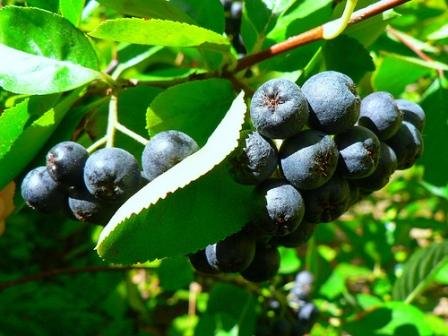Learn How to grow Aronia and relish this low-maintenance and easy to grow superfruit at home.
What is Aronia
Aronia, which is also called as chokeberry is a small shrub native to Eastern North America that offers acidic, delicious edible berries that also attracts birds.
The berries also help in lowering the blood pressure, cleanse the toxins, and strengthen the walls of blood vessels.
It is grown for its ornamental appearance and juicy fruits that have several health benefits.
USDA Zones: 3 to 8
Difficulty: Easy
Other Names: Chokeberries
Family: Rosaceae
Height: 1.5 to 3 m
Exposure: Full Sun
Soil: 5 to 8, slightly acidic to neutral
Foliage: Deciduous
Aronia Berry Information
During the time of flowering in April or when chokeberry sets fruit in summer, it offers a beautiful appearance. The berries are sweeter than cherries and grapes but the bitterness turns it distasteful, though you can neutralize the bitter flavor by pairing the berry with other fruits.
The plant grows up to 8 feet in height, you can expect first berries after three years, and harvest first heavy yield after five years. It is also loved for its flamboyant fall foliage.
This shrub has lovely edible blackberries that are rich in antioxidants and vitamin C.
Note: The interesting fact about growing chokeberries is that they don’t require pesticides or fungicides, as they have natural protection from diseases. Also, they fascinate useful insects to the garden that help other plants from disease.
Varieties for Growing Aronia Berries
- Black Chokeberry (Aronia melanocarpa)
- Red Chokeberry (Aronia arbutifolia)
- Purple Chokeberry (Aronia prunifolia)
Planting Aronia
Instead of growing chokeberries (Aronia) from seeds, buy a plant from the nursery that is at least 2 years old. The ideal time for planting Aronia berries is between spring to early fall, when the ground remains frost-free.
By planting a mature plant you’ll get fruits within a year.
Requirements for growing Aronia Berries
Sun
Aronia is a self-pollinating tree that loves sun, however, it grows in partial shade as well.
Soil
It grows on almost all kind of soil type with pH ranging from 5 to 8 but grows best when pH level stays around 6.5.
Watering
Once established, it is moderately drought tolerant in summer. It does not like to be waterlogged but needs water when soil is dry, also when the plant is young or fruiting.
Temperature
Chokeberry is resistant to frost and withstands even -40 F (-40 ° C).
Aronia Berries Care
Fertilizer
Mix 3-6 inches of organic material into the soil before propagating the plant. Add peat moss or aged manure to the soil to make it nutrient-rich. Chokeberry can survive well in poor soil and mostly require less or no fertilizer. If your plants are growing two to three feet in height every year than no fertilizer is needed. Conversely, If the plant is growing less than a foot each year then use a high nitrogen fertilizer.
Restore the organic material with a mulch of aged manure or compost yearly during spring.
Note: Use poultry or chicken manure on chokeberry bushes.
Pruning
Regular pruning is important in the cultivation of chokeberry. Prune to remove dead and weak branches every year to promote growth and more fruits.
Fertilization is often unnecessary for chokeberries, nevertheless if the soil is poor or plant needs a boost balanced fertilizer can be applied in spring.
Uses
Aronia is grown mainly in Canada and North America. It is used to make fruit juices, jams, sauces and jellies, it can be eaten raw as well.




we have question Aronia berry plants is growing in Florida or have to grow only on the north
How we order plants
Celina
A arbutifolia Red Aronia is the only one with lower chill hour requirements, will grow and fruit into central Florida. The others do not do well further than Zone 7.
Do you need to mulch around it in the winter in Chicago?
Thank you